02 February 2024
![]() 18 mins Read
18 mins Read
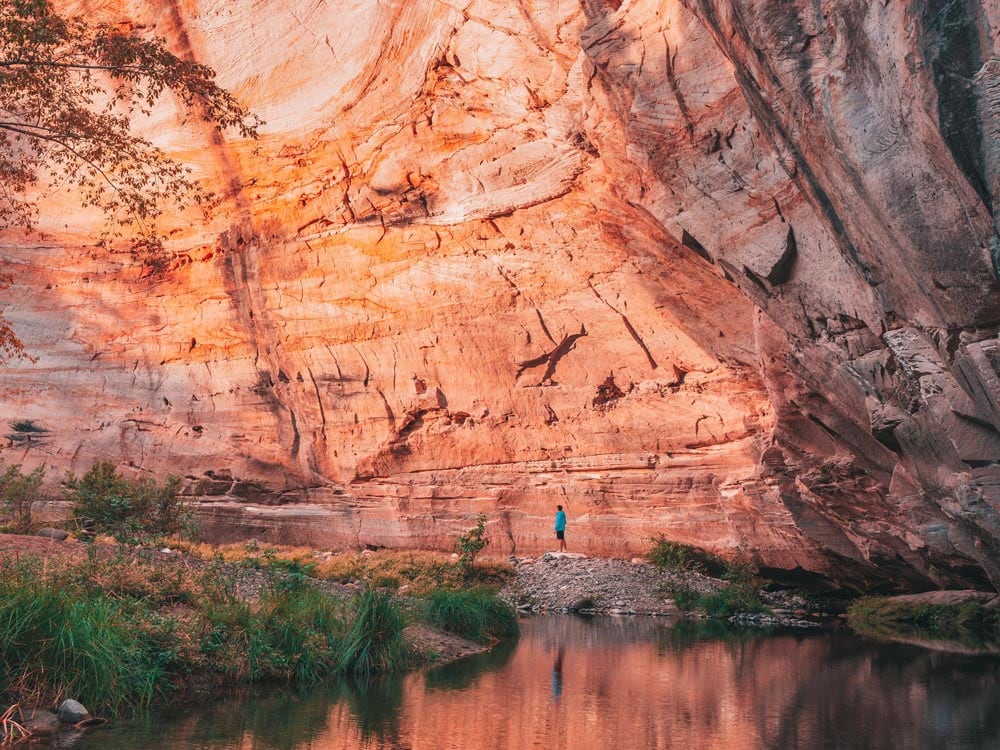
The titan monolith – Ngarrabullgan, or Mt Mulligan – jutting out of Tropical North Queensland’s outback landscape stretches 18 by 6.5 kilometres, making it almost 10 times the size of Uluru. Although Mt Mulligan (located only 150 kilometres west of Cairns) sits beyond the modern consciousness of most, radiocarbon dating suggests Indigenous Australians inhabited the mountain as far back as 37,000 years ago, making it the oldest dated site in Queensland.
Despite its historically low visitation, a new luxury resort is helping to put Mt Mulligan on the map. While many guests choose to take a 35-minute helicopter ride to Mt Mulligan Lodge from Cairns, we’re taking a scenic route closer to the ground, driving two hours from the picturesque Atherton Tablelands.
The nondescript entrance to the lodge suddenly appears to our left and we swing in to see a low-set building surrounded by the quiet of the bush. Mt Mulligan towers in the immediate background behind a row of eucalypts. Adorned in stone and timber, the lodge has a rustic, natural look that melds with its surrounds.
The rooms smell of timber and have a dark, earthy colour palette that seemingly draws the outside in. As I step onto the balcony to admire the deep, corrugated bathtub, a wallaby appears from behind a tree and leans into the weir to drink.
There’s no need for a TV with such a beautiful show of nature on the doorstep; not least the majesty of Mt Mulligan, which peeks between the trees. Out of respect to the Djungan people – the traditional owners of Ngarrabullgan – the mountain cannot be climbed. However, there are plenty of other things to do.
As part of the accommodation package at Mt Mulligan Lodge, a daily tour is offered to guests. This includes cattle mustering at the Mt Mulligan Station, a trip to the heritage-listed Tyrconnell gold mine, morning walks around the lodge’s 28,000-hectare property, and kayaking on the glassy weir. Those with a taste for barramundi can have a shot at fishing for dinner. For times in between, there’s an inky black pool with mountain views and a scattering of lounges and deck chairs for settling down with a book. With a maximum of 16 guests at any time, the exclusive lodge puts relaxation at the fore.
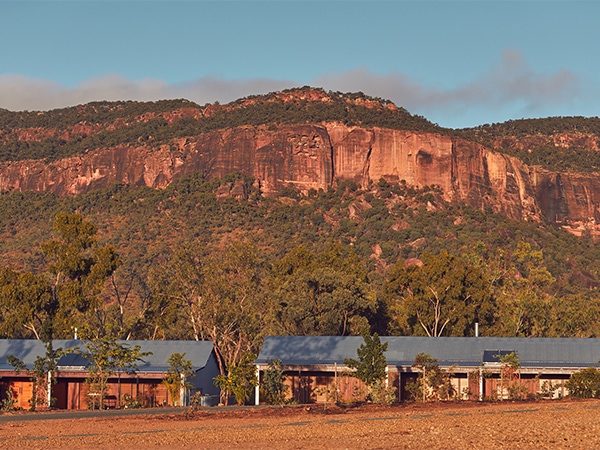
Find outback luxury at Mt Mulligan Lodge in Queensland.
Australia’s most remote luxury lodge experience is accessible only by air and lies 250 kilometres north-west of Kununurra on Western Australia’s out-of-this-world Kimberley Coast.
Open early March to late October each year, the off-grid Berkeley River Lodge is strung like pearls along the coastal sand dunes, overlooking the Timor Sea and surrounded by wilderness. The 20 villas all boast large private decks with 180-degree views of the ocean and outback, and an open-air en suite with a freestanding bath that scores serious tub points.
Guests can opt to spend their days out and about on outback hikes, joining thrilling 4WD tours, fishing for barramundi in remote spots, swimming in freshwater rockpools, exploring rugged river gorges, seeking out Indigenous rock art, learning about the natural history of the area, or even taking a helicopter tour over the epic landscape. Or they can simply lounge by the 20-metre pool at the main house, before settling in for (spectacular) sunset drinks and a degustation dinner.
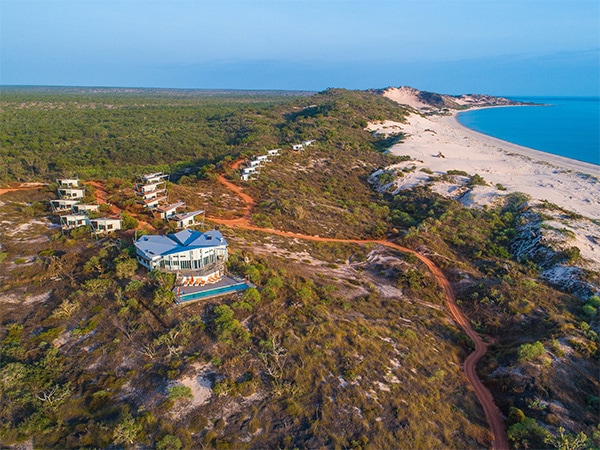
Berkeley River Lodge on the Kimberley Coast is Australia’s most remote luxury lodge experience.
If you think you know what Alice Springs is all about, you might want to reconsider. Here are six unexpected ways to experience this cool and quirky city.
1.Discover top notch eateries: Head to the Todd Mall arcade to find Page 27, for great coffee and food in a quirky space, Epilogue Lounge does a good line in turmeric lattes, tapas and live music, and The Goods really does deliver on coffee and brunch. For something super quirky and unexpected, head away from the CBD to find Watertank Cafe. And make a dinner booking at Hanuman, the fine-dining highlight of Alice’s culinary scene.
2. By E-Bike: Alice isn’t all red dirt and flat terrain, as a day out and about on a mountain bike will soon reveal. Join an Outback Cycling E-bike Tour that ventures out into the bush that surrounds the city over undulating hills to the iconic Simpsons Gap.
3. Through its stars: Drive 15 minutes south of Alice Springs to Earth Sanctuary, a 100 per cent carbon-neutral family business conducting award-winning astronomy tours of the Central Australian night sky.
4. Its art: Alice Springs has the most art galleries (per capita) of any town or city in Australia. Start at the Araluen Arts Centre, a keeping place of stories that showcases the evolution of Australian art from the Central and Western deserts, and hosts the Alice Springs Beanie Festival and Desert Mob. Todd Mall houses several more galleries including Papunya Tula Artists and Mbantua Gallery.
5. Parrtjima – A Festival in Light: Held over 10 days each April (with 2020’s event rescheduled for September), the program features an array of breathtaking light installations including the lighting up of the spectacular MacDonnell Ranges, as well as live music, film screenings and a number of workshops to learn local languages, dot painting and traditional crafts.
6.Through its desert: There’s a reason the Alice Springs Desert Park always tops guides to Alice Springs: where else can you get such a holistic oversight of the Red Centre desert and all its intricacies than here?
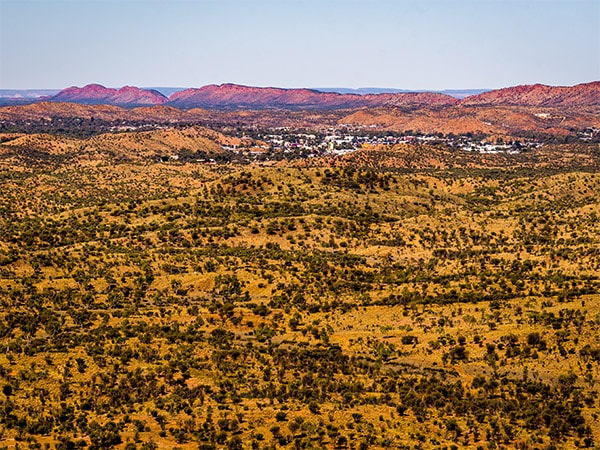
Explore Alice Springs in an unexpected way.
While iconic outback rail journeys The Ghan and the Indian Pacific are both bucket-list items for most Aussies, consider adding the Savannahlander – a 1960s ‘silver bullet’ railmotor that rattles once a week through the Queensland outback – to that list.
A somewhat informal and eccentric experience, with nary a starched white tablecloth in sight (instead leather seating, timber trims and plenty of character), this rail journey departs Cairns every Wednesday for the wet tropics area of the Kuranda Range and on through the Savannah country until it reaches the old gold-mining town of Forsayth; the carriages trundle along an old railway line that once carried prospectors pursuing gold, copper, marble and gemstones in these parts.
With different permutations of the journey available, ranging from day trips to overnighters and longer, guests can mix and match to create their own custom experience. Choose a four-day rail journey to get the most out of this unique experience, adding on side trips to Cobbold Gorge, the Undara Lava Tunnels and Chillagoe-Mungana Caves.
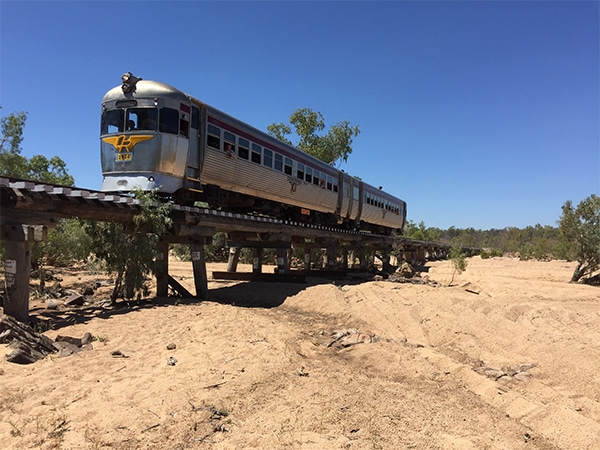
Ride the Savannahlander, a 1960s ‘silver bullet’ railmotor through the Queensland outback.
On Western Australia’s Coral Coast, the seaside city of Geraldton is your anchor point for exploring a region also known as the Outback Coast.
Geraldton itself is an increasingly trendy locale with a rich Indigenous history and the mantle of being the windsurfing capital of Australia – with plenty of river cruising, rock climbing, deep-sea fishing, abseiling, horse riding and bushwalking to entertain.
Heading out of town, take the Indian Ocean Drive, a 155-kilometre-long stretch that traces the outline of the Coral Coast between Geraldton and Kalbarri National Park. Plug Port Gregory into the GPS and you’ll find a quiet little fishing village with a very big attraction: Hutt Lagoon (‘the pink lake’), one of Australia’s most hash-tagged locations, is a body of water dyed Barbie pink thanks to the fact it is full of carotenoids produced algae and salt.
The Kalbarri section of the Coral Coast is wonderfully dramatic, with its rugged shoreline marked by bridges and natural amphitheatres. Join the dots between vantage points in Kalbarri National Park where you will feel like you’re on the rooftop of WA looking out over Nature’s Bridge, Castle Cove and Island Rock. The gorges of Kalbarri are known as ‘Nature’s Window’ and on a clear day, it’s like looking into Australia’s prehistoric past.
Head away from the highway to hike from Rainbow Valley to Mushroom Rock where the coloured sandstone is estimated to be about 350 million years old. You can try a birding tour with the traditional owners of the land (Rainbow Valley Cultural Tours), count kangaroos in the late afternoon or simply admire the vast swathes of ancient red earth surrounded by blue sea, which is stretched like denim around its curves.
Australia is littered with stunning stones and monumental rocks that are worth going out of your way to see. Here, a ‘must see’ rock rollcall.
Karlu Karlu, NT: Otherwise known as the Devils Marbles, these compelling red boulders, some standing up to six metres high, are believed by the Warmungu people to be the fossilised eggs of the Rainbow Serpent. Located 100 kilometres south of Tennant Creek.
Mt Conner, NT: Located on the road from Kings Canyon to Yulara, this sandstone-topped monolith is also known as Fooluru due to the fact that many people mistake it for the slightly more famous monolith down the road.
Remarkable Rocks, SA: Located in Kangaroo Island’s Flinders Chase National Park, these granite boulders appear to be balancing perilously together at the water’s edge but have in fact been formed over hundreds of millions of years.
Sawn Rocks, NSW: Resembling a mammoth pipe organ, this stunning 40-metre-high rock formation is the remains of a lava flow from a volcanic eruption that took place some 21 million years ago. Located in Mt Kaputar National Park, it can be easily reached on the Sawn Rocks walking track.
Murphy’s Haystacks, SA: Considered some of the oldest rocks in Australia – between 1.6 and three billion years old, to be precise – the inselberg (island rock) sits on a hilltop in the Eyre Peninsula and is being slowly eroded away. While located on a private property, the site is open to the public.
Also check out: The Pinnacles on Western Australia’s Coral Coast; Burringurrah (Mt Augustus), the largest monolith in the world; the Indigenous art-daubed Ubirr in Kakadu National Park; and the Candlestick in Fortescue Bay in Tasmania.
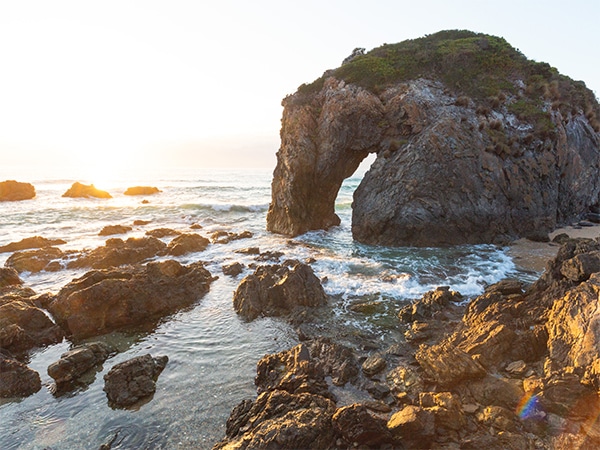
Make it your mission to see Australia’s most amazing rocks.
Larapinta Trail, NT: Tracing the ridges of the West MacDonnell Ranges over 223 kilometres from Alice Springs to Mt Sonder, the legendary long-distance Larapinta Trail winds through the Northern Territory’s ancient desert landscape. To complete the whole track you’ll need up to 20 days, but you can choose to walk sections or tag along with several operators including Australian Walking Holidays and Life’s an Adventure, which offer guided experiences condensed into under a week.
Carnarvon National Park, Qld: Covering off a raft of different topographies including rainforest, mountainside and sandstone gorges, Carnarvon Gorge and the Wild West is an eight-day guided walk with Auswalk that ventures into the heart of the Queensland outback and Carnarvon Gorge. You’ll stay in comfortable en suite chalets, cabins and glampsites along the way.
Flinders Ranges, SA: The 1200-kilometre Heysen Trail comprehensively covers South Australia’s diverse landscapes – including its epic outback. Head to the Flinders Ranges to hike sections of the trail. Australian Walking Holidays offers a six-day Heysen Trail and the Flinders Ranges tour as well as Wild Bush Luxury’s four-day Arkaba Walk, one of the Great Walks of Australia.
Kimberley Walking Tour, WA: Take on the majesty of the remote East Kimberley region and sleep under the stars in a swag with Park Trek’s 10-day walking and camping tour. Starting and ending in Kununurra and with 4WD transport to cover off some of the less foot-friendly distances. You’ll also stop at paradisiacal swimming spots along the way, including the warm pools of Zebedee Springs, and stay on the famous El Questro station.
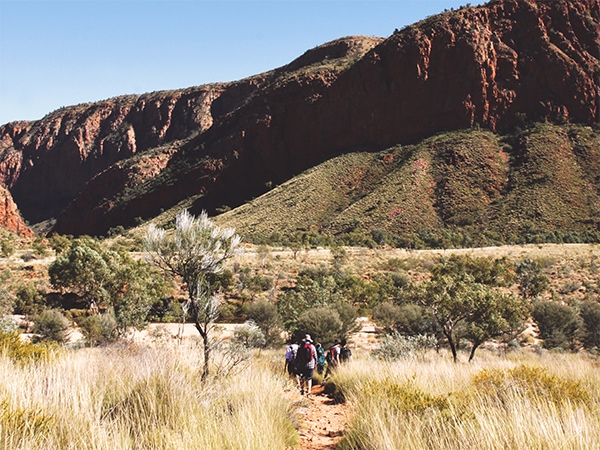
Set out on a multi-day outback hike, including the Larapinta Trail. (Credit World Expeditions / Great Walks of Australia)
Imagine you and your swag under the infinite night sky – with a few home comforts thrown in for good measure. Here, some of the best outback glamping spots across the country.
The Arkaba Walk – Wild Bush Luxury four-day venture into the magnificent Flinders Ranges and private Arkaba Conservancy connects you to the landscape with its ‘star beds’; sleep out in a deluxe swag, hot-water bottle included.
The remote Kooljaman at Cape Leveque, owned and run by the local Indigenous Bardi Jawi communities, offers unadulterated views of red pindan cliffs and the Indian Ocean, plus a bush butler service; stay in the solar-powered deluxe safari tent Pop Louie, named after a local Bardi Elder.
Sleep at the Bungle Bungle Wilderness Lodge within a stone’s throw of the Bungle Bungles, in the heart of Purnululu National Park, in an en suite tented cabin exclusive to APT that allows you to soak in all the colours of the Kimberley.
Feel at home among the buffalo and magpie geese at the Bamurru Plains Wild Bush Luxury lodge on the fringes of Kakadu National Park, and wake each day to a wild morning chorus permeating the mesh walls of your plush bungalow-style safari tent.
Spend your evenings at Ikara Safari Camp in South Australia on the deck of your safari tent, secluded among the river red gums, marvelling at the wonder of Wilpena Pound – you’ve got a front-row seat here.
Emma Gorge Resort on the Kimberley’s legendary El Questro station in WA has safari-style tents planted among the rocky red Cockburn Range in the shade of ancient boab trees; all the beauty of Emma Gorge, El Questro’s most popular gorge walk, is right on your doorstep.
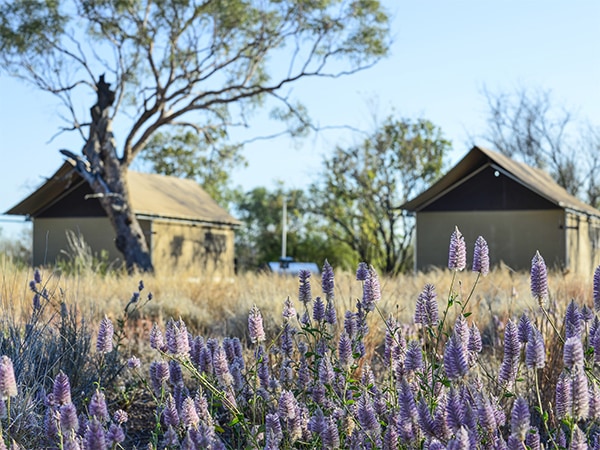
Sleep at the Bungle Bungle Wilderness Lodge.
Between the major attractions of the Northern Territory lies a parade of unexpected delights just waiting to be discovered. Here, we have several to get you started.
1. It’s often said the best time to see the culturally rich and spiritually vibrant Kakadu National Park is the dry season (April to October), but take a trip up north during the tropical summer and prepare to be dazzled. Fly with Kakadu Air over the deep jade pools formed by the wet season, take in the rocky plateau of Lightning Dreaming, and check out Jim Jim Falls at the height of its power.
2. In a small museum at the Northern Territory Library, tucked away in a quiet corner of the city’s Parliament House, a portal to the world of Darwin’s traditional owners opens up. Displays about the strength and unity of the Larrakia people convey the message that the powerful spirituality of Kakadu or Arnhem Land doesn’t cease to be once you’re inside city limits.
3. The Air Raid Arcade in central Darwin doesn’t look old enough to have survived Cyclone Tracy let alone the Japanese bombings of 1942, but the name evokes the past and pre-empts the time warp within. Take a stroll down the arcade and discover a mix of indie fashion outlets, offbeat art and eccentric eateries like Mad Snake Cafe, bursting with relics from another era.
4. The Street Art Festival of 2019 left Darwin with 15 bright murals etched across the back streets of the CBD by a mix of local and international artists. Look around and you’ll find giant Gould’s finches, kangaroos standing atop Kombi vans, and a menagerie of crocs and snakes that come alive in glorious augmented reality through the lens of your phone.
5. Some of Darwin’s best dining experiences can be had by the water’s edge. Lola’s Pergola, with its funky circus-themed decor, robust drinks menu, best-in-class burgers and arresting views of Cullen Bay, is a standout.
6. Drive one and a half hours south-east of Nitmiluk (Katherine) Gorge to immerse yourself in the sweetest of local secrets: the turquoise, spring-fed thermal pools of Bitter Springs in Elsey National Park are set among palms and tropical woodlands and you might even find yourself swimming with freshwater turtles.
7. There’s no better way to explore Litchfield National Park’s 1500 square kilometres than by helicopter, run exclusively in the park by NT Air. Prepare to see some of Litchfield’s most popular sights – magnetic termite mounds, the mysterious Lost City, and the jewel in Litchfield’s crown, the mighty Wangi Falls – from a unique bird’s-eye perspective. All before landing on a rocky plateau at Sandy Creek, a croc-free pool featuring three mini waterfalls.
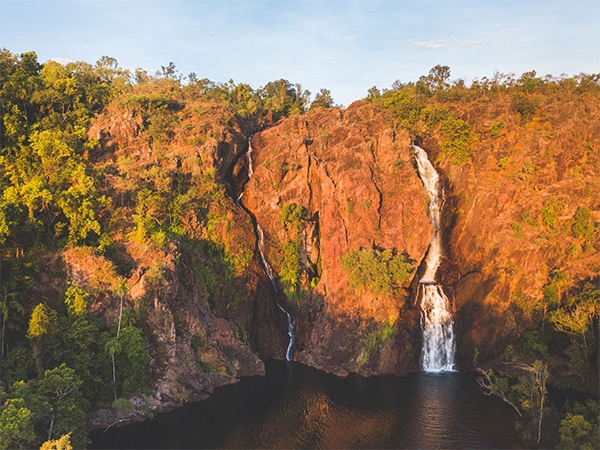
Be surprised in the Top End (Credit Tourism NT/Jackson Groves)
Large swathes of the outback’s red and golden sands are carpeted in colour come spring, when tens of thousands of Australian wildflowers burst into life.
Western Australia, the epicentre of native flora, boasts some 12,000 species of wildflowers, 60 per cent of which are found nowhere else on Earth. Head to Wildflower Country, a few hours’ drive north of Perth, to see the living kaleidoscope, the Golden Outback (including Wave Rock) and Stirling Range National Park in the state’s south-west, or Bay of Isles in Esperance.
But, of course, WA doesn’t have a monopoly on pretty. The Larapinta Trail, north of Alice Springs, boasts more than 600 species of wildflowers scattered across its 223-kilometre length, while the Snowy Mountains in NSW’s Kosciuszko National Park replace their frigid winter stillness with blooms come spring, including more than 20 alpine species that are totally unique to the park. And, in Victoria’s Grampians (Gariwerd) National Park, petyan – or the season of wildflowers (late spring) – is one of six weather periods recognised by the traditional owners.

See the wildflowers of WA and beyond.
Located in the heart of Queensland’s stunning Gulf Savannah region, Cobbold Gorge is a bit of a secret gem. The quiet beauty of the gorge can be experienced by cruising its length or, if you are feeling energetic, try stand-up paddleboarding it. And while a scenic helicopter flight used to be the only way to see the gorge from above, the completion of an 11-metre glass bridge stretching from one side to the other now offers a whole new perspective.
Found within Nitmiluk National Park, some 292 kilometres southeast of Darwin, Nitmiluk is actually a series of 13 sandstone gorges that stretches along the Katherine River. While there, you can cruise its waters or take to some of its celebrated walking trails; there are more than 100 kilometres of trails snaking through the park.
The Carnarvon Gorge is located in Queensland’s Carnarvon National Park. Visit to wonder at the Art Gallery, a significant Indigenous rock art site, and walk the 87-kilometre Carnarvon Great Walk, taking in soaring cliffs and sandstone escarpments.
West of Alice Springs in the Tjoritja/West MacDonnell National Park, Ormiston Gorge is a breathtaking combination of towering rock walls and abundant wildlife. You can do a spot of wild swimming in its cool waters or take on the slightly more strenuous (but equally rewarding) Ormiston Pound Walk.
With its soaring sides and astonishing acoustics, the natural amphitheatre at the end of the Cathedral Gorge, located within Western Australia’s Purnululu National Park, is a true geological wonder.
The sometimes challenging walk through Hancock Gorge located in WA’s Karijini National Park, is rewarded with a swim in the fresh green waters of Kermits Pool.
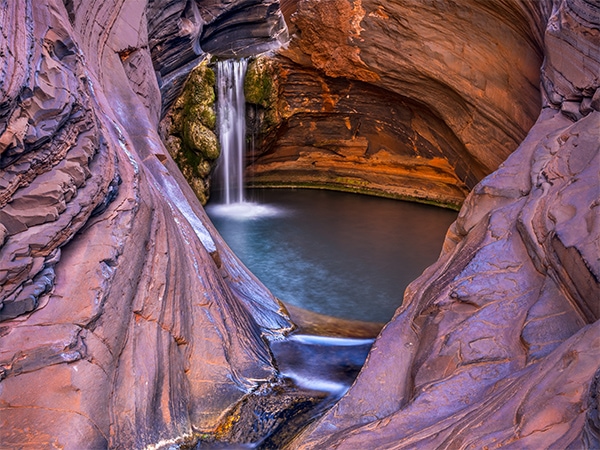
Visit Australia’s gorgeous gorges.
Drought is something we are used to in this wide brown land of ours, but many of us are often removed from the impact of it. One way to better understand what life on the land is like, and help out even for a few days, is by booking a station stay at one of the many working cattle stations that form a patchwork across the country.
Places like Trilby Station, a roughly 130,000-hectare property near the village of Louth in outback NSW, owned and run by Liz and Gary Murray. Or the organically farmed Kilcowera Station, a 38,000-hectare property halfway along the Dowling Track in Queensland. Or Moolooloo and Moorillah Station in the heart of South Australia’s Flinders Ranges; the merino sheep station has been in the Slade family for four generations.
Station stay accommodation options can be anything from campsites to shearer’s quarters to bunkhouses, with hearty meals often included. As for what to do when you are settled in, the activities run the gamut from outback hikes, yabbying and fishing, birdwatching and four wheel driving.
But possibly the most rewarding pastime is helping out with the day-to-day chores and jobs required to keep outback stations running smoothly. To find out more about station stays across the country, check out the options on Outback Beds, Station Stays SA and Outback Queensland.
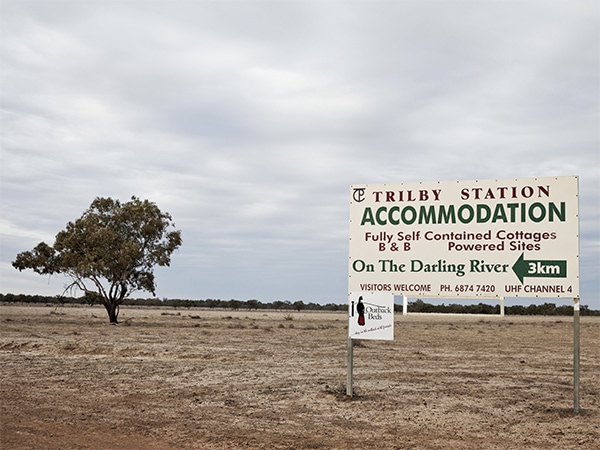
Trilby Station is a roughly 130,000-hectare property near the village of Louth in outback NSW. (Credit Destination NSW)
LEAVE YOUR COMMENT